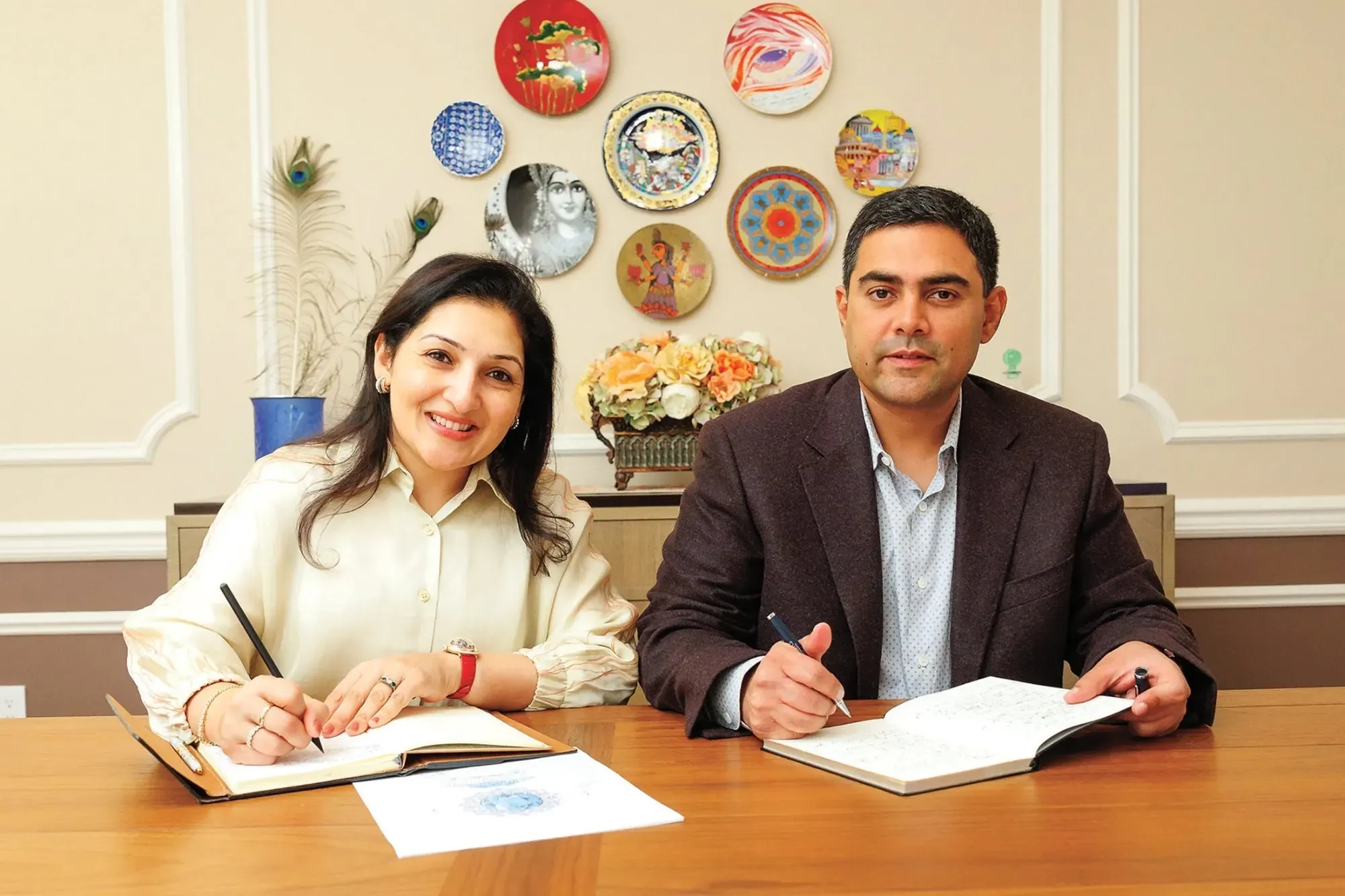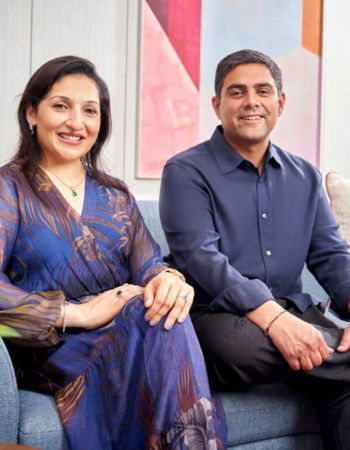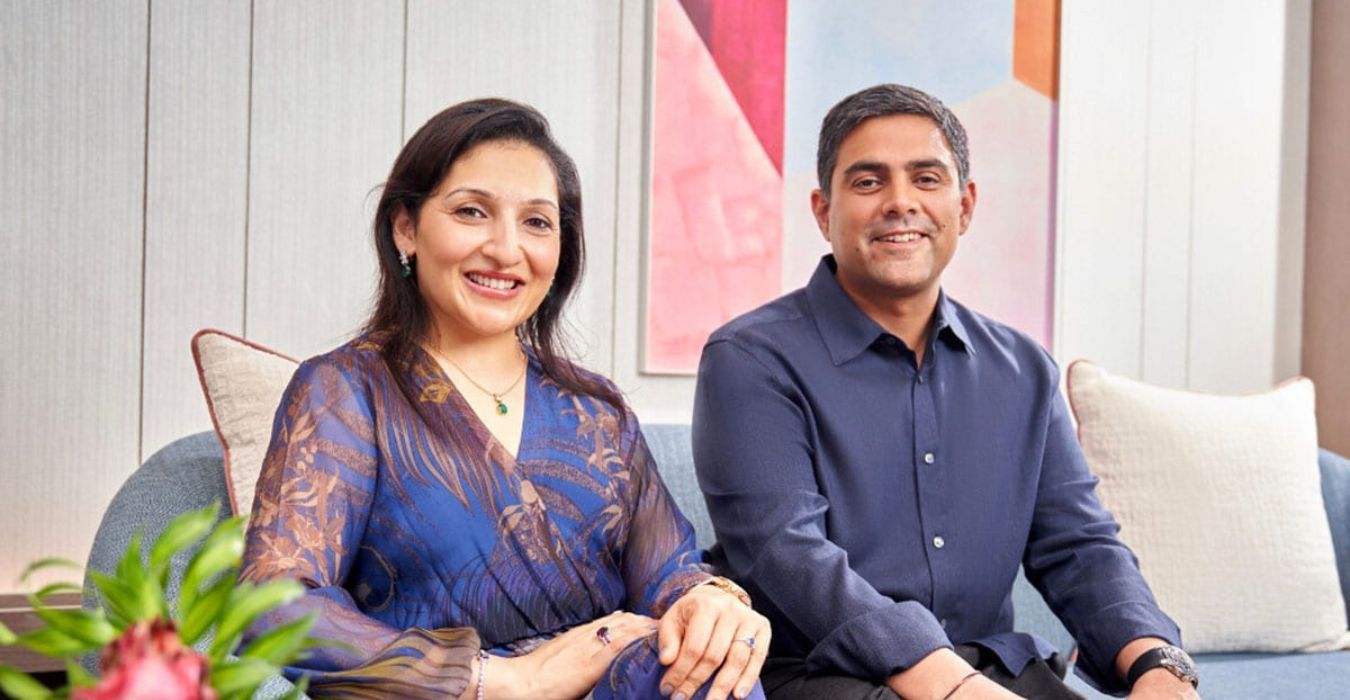Twenty-five years after a chance encounter with Ratan Tata sparked his vision for organised retail, Ankur Daga has returned to India with Angara, the technology-driven jewellery platform he founded in 2005. Growing up in a family steeped in the jewellery business, Daga initially rejected the industry's fragmented, store-based model. But after studying at Wharton, working at McKinsey, and witnessing the transformation potential in organised retail, he saw an opportunity to revolutionise how consumers buy gemstones.
Today, Daga's vision is materialising in India's colored gemstone market—a nascent but rapidly growing segment representing just 1% of the country's $85 billion jewellery industry. While diamonds dominate at 9% and gold commands 90% of the market, Angara is betting on a cultural shift toward self-expression and individuality that's driving consumers away from the "colourless perfection" narrative established by De Beers' iconic "Diamonds Are Forever" campaign.
With technology enabling millions of customisation combinations across 40 gemstone types and 400 designs, Angara is not just selling jewellery—it's reviving India's historical affinity for colored gemstones while educating consumers about natural stones, acceptable treatments, and investment potential. As colored gemstones appreciate at 15-21% annually compared to diamonds losing 40% of their value in recent years, Daga's homecoming represents both a return to his roots and a bet on India's gemstone renaissance.
Excerpts from Interview:
Q: Angara entered the Indian market this year. What unique value does Angara bring to the Indian coloured gemstones market, and what sets it apart from competitors?
A: Angara brings a threefold value proposition to India’s colour gemstones market, which is still nascent, representing only about 1% of the $85 billion jewellery market, with gold at 90% and diamonds at 9%. First, we focus on education. Indian consumers are sophisticated about gemstones like rubies, emeralds, sapphires, and semi-precious stones, rooted in cultural and astrological traditions. However, misinformation about natural versus glass-filled or lab-grown gemstones is common. We aim to clarify what constitutes a natural gemstone, acceptable treatments, and their value. Second, we leverage technology to offer extensive customisation, allowing consumers to choose from 40 gemstone types, various shapes, sizes, qualities, and price points, which is impossible in offline stores. Third, we align with the growing trend of self-expression, where consumers select gemstones based on personal aesthetics, moving away from the diamond-dominated market shaped by De Beers’ “Diamonds Are Forever” campaign.
Q: What factors are primarily driving the significant growth in the coloured gemstones market in India?
A: Several factors are fueling the growth of India’s colour gemstones market. First, there’s a cultural shift toward self-expression, where individuals choose gemstones based on personal taste rather than conforming to the colourless diamond standard set by De Beers. High-profile examples, like the Ambani wedding highlighting emeralds or celebrities like Kate Middleton and Victoria Beckham choosing sapphire and emerald engagement rings, have popularized colored gemstones. Second, there’s a broader trend toward colour across industries—seen in vibrant iPhone colours, supercars, and apparel—reflecting a societal move toward individuality. Third, India’s historical affinity for gemstones, rooted in the legacy of Maharajas and astrological traditions, is experiencing a resurgence, amplified by modern influences like celebrity endorsements and events like the Met Gala showcasing gemstone jewellery.
Q: Historically, India had a vibrant gemstone culture that faded over time. What caused this decline, and what’s driving the current resurgence?
A: In the late 19th century, gemstones were a significant part of the global jewellery industry, alongside diamonds. However, De Beers’ 1947 “Diamonds Are Forever” campaign redefined perfection as colourless, flawless diamonds, establishing them as the ideal for engagement rings. This marketing shifted the jewellery market, with diamonds capturing a 90% share in the U.S. and overshadowing colored gemstones globally, including in India. Over the last few decades, societal values have evolved toward embracing individuality and flaws, rejecting the singular perfection narrative. Consumers now seek gemstones that resonate with their personal style, colour preferences, and cultural or astrological significance, driving a resurgence in India’s gemstone market.
Q: How has Angara’s technology-driven approach reshaped the jewellery buying experience for Indian consumers?
A: Technology allows Angara to return the jewellery industry to its roots, offering customisation reminiscent of centuries past. Our platform displays 40 gemstone types in various shapes, sizes, qualities, and price points, enabling consumers to create personalised pieces, from a 20,000-rupee silver ring to a 20-lakh platinum one. This level of choice—millions of combinations across 400 designs per gemstone—is impossible in physical stores, even high-end ones like Tiffany’s. In India, where offline stores offer limited options, our technology showcases the full spectrum of possibilities, educating and empowering consumers to make informed choices tailored to their preferences.
Q: How has the gemstone market evolved since you founded Angara in 2005?
A: The gemstone market has matured significantly since 2005. In the U.S., gemstone engagement rings grew from 3% of the market in 2005 to 15% today, reflecting increased consumer sophistication. Colored gemstones have also proven to be strong investments, appreciating at 15-21% annually over the past decade, outperforming gold (14% CAGR) and the S&P/Sensex (11% CAGR). For instance, a $1,000 rubelite from 10 years ago is now worth $7,000. Meanwhile, diamonds have lost 40% of their value in the last three years, driving investment dollars toward colored gemstones, especially among high-end buyers at auctions like Christie’s.

Q: Which gemstones are most in demand in India, and how does this compare to other markets?
A: In India, emeralds are the most popular gemstone, followed by rubies, aquamarine, pearls, and citrine, driven by historical significance (e.g., Maharajas’ emerald collections) and recent cultural events like the Ambani wedding. In contrast, the U.S. market prefers sapphires, followed by rubies, with emeralds in third place. Indian consumers also show a unique preference for rare and investment-grade gemstones like tanzanite and padparadscha, as well as high-quality akoya pearls over freshwater pearls, due to their rarity and astrological significance.
Q: How has the rise of astrology influenced the gemstone market in India?
A: Astrology is a significant driver of gemstone demand in India, where stones are often chosen based on birth charts and astrological recommendations. Unlike the U.S., where aesthetic preferences dominate, India’s market blends astrological and aesthetic motivations. The resurgence of astrology, fueled by technological advancements like apps, has broadened its appeal, even among younger, sceptical demographics. This trend is increasing demand for natural gemstones, as they are considered essential for astrological purposes, further boosting the market.
Q: Can you share details about Angara’s famous clients?
A: We don’t disclose client details unless they’ve been shared publicly. On our Instagram, you’ll see celebrities like Carrie Underwood and an actress from The White Lotus wearing our rings. We have clients across Hollywood and even in the White House, but we maintain confidentiality for those who haven’t posted about their purchases.
Q: What trends have you observed in the Indian market since Angara’s entry?
A: Since entering India, we’ve noticed four key trends. First, our average ticket price is 60,000 rupees, significantly higher than expected compared to other direct-to-consumer brands. Second, Indian consumers are highly knowledgeable, often knowing exactly what they want before contacting us. Third, 80% of call centre inquiries are about visiting our facilities, indicating a preference for tactile experiences unique to India. Fourth, there’s a clear split: most diamond sales are lab-grown due to their lower cost and aesthetic focus, while colored gemstone sales are predominantly natural, driven by their astrological significance and strong investment potential (appreciating rapidly compared to diamonds, which have lost value).






